Adam Yamey's Blog: YAMEY, page 233
August 25, 2015
An Albanian Affair

You might wonder why I am writing about Bashibazouks in Albania as reported in a newspaper published in Cape Town in 1911. The answer is easy. During my researches into the life of my great-grandfather the late Senator Franz Ginsberg (1862-1936) who migrated from Prussia to the Cape Colony in 1880, I needed to leaf through the pages of South African newspapers that are stored in London’s British Library. So it was that I happened by chance to spot a small item about the struggle between the Ottoman Turks and the Albanian independence fighters in a 1911 edition of the Cape Times Weekly.
The Bashibazouks‘Tusi’ is a spelling of the town of Tuzi (‘Tuz’ in Albanian), which is now in the Republic of Montenegro and is close to the border of modern Albania. The news item that I found in the Cape Times Weekly refers to an incident during the events, which led eventually to the First Balkan War (1912-1913). In the last days of March 1911, the (Roman Catholic) mountain people residing in northern Albania were called to arms by one of their leaders Ded Gjo Luli (1840–1915), and revolted against the Turks
 Maltsors in Tuzi (from Durham's book)
Maltsors in Tuzi (from Durham's book)The ‘folk’ who might have ‘engineered’ this could well have been the Montenegrins, whose King Nikola might well have supplied the rebels with weaponsAlthough Tuzi had been recaptured by the Turks, it was not free of trouble. In about July, after a rising in Djakova during which the Turkish Kaimmakan (an Ottoman official, a sort of ‘sub-Governor’) was killed, Albanian rebels:“… made a successful raid, and cut off the water-supply of Tuzi.Tuzi figures in Durham’s book again, but after the events described above. She wrote that eleven political prisoners who had been involved in the Bomb Affair in 1907 had burrowed their way to freedom under the walls of the prison at Podgoritza, and:“…taken refuge with Mihilaki Effendi, the Kaimmakam, who brought them at once by steamer to Scutari.Tuzi, which was on territory granted to Montenegro by the Treaty of Berlin (1878), was retaken by the Montenegrins from the Turks in October 1911. Their soldiers captured the nearby Fort of Shipchanik, and occupied the town. Edith Durham wrote
 Montenegrins near the Fort at Shipchanik after taking it from the Turks(from Durham's book)
Montenegrins near the Fort at Shipchanik after taking it from the Turks(from Durham's book)Edith Durham visited this hospital again in 1912. According to one of her biographers Marcus Tanner:“In a filthy hospital in Tuzi, a recently captured village on the Ottoman side of the border, Durham was horrified to discover why the bandaged faces of eight captives were curiously flat. Removing the bandages she found that their noses had been cut off.So much for Tuzi, a place which I had not heard of until I chanced upon it in an old South African newspaper. The little article was written during a revolt of the Albanians, which had been encouraged not only by the Montenegrins but also by an Italian of Albanian ancestry, an Arbëresh man from the region of Cosenza in the South of Italy. Terenzio Tocci (1880-1945), who was eventually executed by Enver Hoxha, travelled to the Balkans in April 1911 to participate in the Albanian uprising. According to Robert Elsie: “On 26 April 1911, he gathered the chieftains of Mirdita near Orosh and proclaimed the independence of Albania, hoisting the Albanian flag for the first time since the death of Scanderbeg, and formed a provisional government, which had the support of much of northern Albania. My ‘discovery’ of an item of long out-of-date news whilst researching a quite different topic, namely the biography of a Jewish immigrant in South Africa, led to the exploration of an aspect of Balkan history that is new to me. It is serendipitous revelations such as this that adds much enjoyment to researching historical topics and almost anything else.
Adam Yamey has written two books about Albania:
CLICK HERE for more information.
Published on August 25, 2015 14:03
August 16, 2015
Between profit and philanthropy
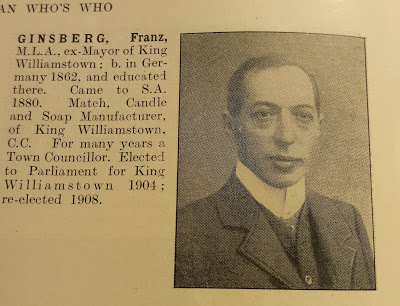
This is an introduction to a book that I am currently writing. There is much more work to be done before my manuscript is completed, let alone edited. Any comments or reflections on this will be gratefully accepted.
Steve Biko (1946-1977), the black anti-apartheid activist and founder of the Black Consciousness Movement was callously murdered by the South African police. He was born ten years after my great-grandfather Franz Ginsberg (1862-1936) died in South Africa.
At first sight, there would appear to be little to link a German Jewish immigrant, such as Franz was, with a martyr to the cause of freedom of the black people in South Africa. However, there is a connection. Biko was born, and also lived in, an African ‘township’ in King Williams Town, a major industrial town in the eastern part of the Cape Province. Steve’s birthplace, Ginsberg Township, was named to honour my great-grandfather. The founding of this township and (others like it) marked a significant stage in the evolution of apartheid, an evil which Biko and his colleagues strove to combat.
Ginsberg arrived in South Africa aged eighteen with a basic education, and then began work as a photographer’s assistant. Within a few years, he became one of King Williams Town’s leading industrialists. Soon after that, he entered local, and then national politics. By 1927, he was awarded with South Africa’s highest honour: he was elected a Senator.
He left Germany both to seek his fortune and also to escape anti-Semitic persecution. In his adopted country, South Africa, he found himself privileged to be a white man accepted by others on the basis of merit rather than religious beliefs. Unlike many – if not most – of his white contemporaries in South Africa who regarded non-white people as members of an inferior species worthy of suppression and servitude, Ginsberg regarded them as fellow human beings. There is no doubt that he felt that the ‘white man’ should remain in charge in South Africa, and not risk being in competition with people whose background was not European. However, he was a man of conscience with great sympathy for his non-white neighbours. During his life in South Africa, he tried hard and earnestly to balance his interests in safeguarding the advantages of the white people against his desire to ease the lot of their severely disadvantaged non-white neighbours.
My forthcoming book, which is at an early embryonic stage in its life, will describe the many-faceted life of my great-grandfather Franz Ginsberg – a patriotic capitalist with a philanthropic heart.
Click HERE visit Adam Yamey's
Author Page
on Amazon
and HERE to visit his web site.
Published on August 16, 2015 13:56
August 4, 2015
ROAMING WITH THE ROMA
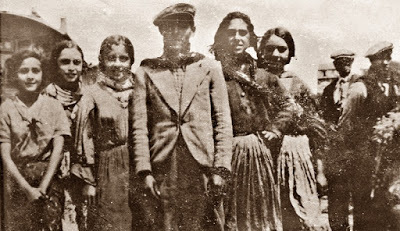
The Gypsies (aka ‘Roma’ or ‘Rom’) are much maligned and misunderstood. Two books written by the Belgian Jan Yoors present the nomads of Europe in a positive and life-enhancing light. Here are my reviews of his two books. "THE GYPSIES"I first learned of the existence of this extraordinarily fascinating book by Jan Yoors when I was reading Fonseca's book about gypsies (Roma), "Bury me Standing". Published in 1967, this book is available from on-line second-hand stores.Sometime in between the 2 world wars, Jan Yoor, a young Belgian teenager, did something very unusual. He ran away with the gypsies. He joined a group ('kumpania') of Roma camping near to his home, and was eventually adopted by them. His understanding parents did not seem to mind him being away from home and school for long periods whilst he wandered around Europe with his new companions.Yoor's first-hand experiences of living the life of a young gypsy were not wasted. Years later, he described them in his book "The Gypsies". His account of living with the Roma is detailed and seems accurate. Yet, it is not a dispassionate anthropological study. As I read his book, I felt that I was almost experiencing the trials and tribulations of life on the road with the gypsies. Yoors shows a deep understanding of the subtleties of the Roma mentality, and describes their beliefs, traditions, and daily life, exquisitely. At times, his writing has a poetic quality, yet it never becomes trite or flowery. The Roma could not have wished for a more sympathetic yet objective description of their lives than that written by Yoors.Read this gracious book, and you will see the Roma in an entirely new light.
"CROSSING"
This book is written by the Belgian Jan Yoors. It is the second of his books that I have read. In his first book “The Gypsies” he describes how he began living with a gypsy (Rom) ‘cumpania’ as a teenager, and begun to learn about their ways of life whilst they gradually accepted him as one of their own kind. In the second book, “Crossing”, Yoors, by now regarded as a fully-fledged Rom by the cumpania that had adopted him and also by other Rom that he met, writes about his experiences with the Rom community during the Second World War (‘WW2’).The Allied authorities fighting the Germans realised that the Rom were eminently suited to assist the efforts of the Resistance in France. Monsieur Henri recruits Yoors to become an intermediary between the Rom and the mysterious groups who worked incognito to organise acts of resistance against the Germans. All goes well for a while, but inevitably Yoors is arrested by the Nazi security police.As in his first book, Yoors writes lyrically and sensitively about the Rom and what he learned about their idiosyncratic philosophy of life. It was what he learnt from his fellow Rom that helped him survive the most horrendous imprisonment and interrogations.The last and very exciting part of the book describes Yoors’s role in smuggling people from Axis-occupied Europe across the Pyrenees into Franco’s neutral Spain.After the war, Yoors became an artist in the USA, specialising in tapestry. This book, like his first, is a work of - art a fascinating tapestry of words beautifully woven together.Read more about Jan Yoors on: https://en.wikipedia.org/wiki/Jan_Yoors
Read books about migration by Adam Yamey :Click: HERE!
Published on August 04, 2015 07:32
July 17, 2015
Only at Christmas...
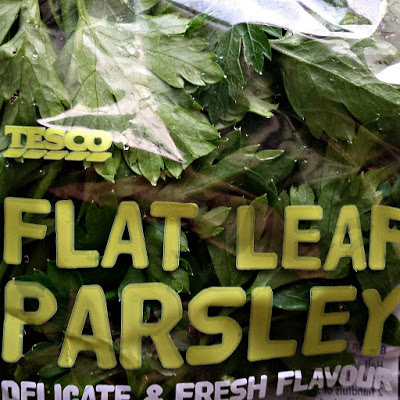
-A divertissement-
I qualified as a dental surgeon at University College Dental School (London) in March 1982. I began my first job in practice soon after that. I joined a small well-run practice in Rainham (Kent), an overgrown village between Gillingham and Sittingbourne. I was about 60 miles (~96 Km) from Central London, but it felt as if it were on a different planet.
My patients were delightful on the whole, and not overly demanding. The principal dentist, Julian Unter, was helpful and never put me under any pressure. I recall once after I had been in practice for only a few weeks that a patient asked me how long I had been a dentist. Not wishing to alarm her that I had only been ‘let loose’ from dental school a few weeks earlier, yet wanting to be honest, I replied: “I have been working up in London for five years”. This, which was true because I had been studying in a dental environment for that length of time, appeared to satisfy the questioner.
There was a branch of Tesco’s supermarket in Rainham. I used to buy bits and pieces there for my lunch. Whenever I handed a chocolate bar or any other piece of dentally unsuitable confectionary, the cashiers, many of whom were patients of our practice, would then wave the chocolate or similar in the air and then shout to everyone in the shop: “Look what the dentist is eating”.
I was brought up eating Mediterranean dishes at home, and learned to cook them myself. Garlic was an essential ingredient in my cooking. I used to cook for myself in my digs in Kent. One day, I was working on an elderly lady’s teeth, when she swept my hand away, and exclaimed: “Ooh, you’ve been eating garlic, Mr Yamey.” From then on, whilst I was working in Kent – and that was for about 11 years – I desisted from eating garlic during the working week. Now, I work near Central London and few of my patients are of Anglo-Saxon origin, and almost all of them eat garlic, so my consumption of the stuff is no longer a problem.
Parsley was another of my favourite ingredients during the 1980s when I worked in Kent. When I began working there, I went into Tescos, which was almost the only food store in the village, and asked for parsley. The reply I received from the surprised store assistant was: “No dear, there’s no call for it. We only get parsley in at Christmas.” I was only 60 miles from London, where parsley was readily available throughout the year, but no one wanted it in Rainham except at Christmas. This and many other similar cultural differences made me realise how different Kent was to London and many of the exotic places that I had visited much further away from it.READ MORE BYADAM YAMEYCLICK: HERE
Published on July 17, 2015 23:30
July 10, 2015
Distasteful matters in biography
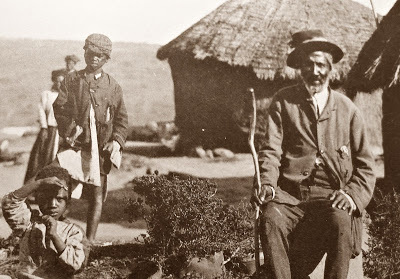
I am in the process of writing a biography of one of my 19th century ancestors, who gradually assumed great importance in the political life of South Africa during the last decades of the 19th and the first decades of the 20th centuries.
I have been led to believe that my subject was sympathetic to the problems faced by his black African (‘Native’) and other non-European neighbours and fellow countrymen. This has been acknowledged by at least one black African organisation, the Steve Biko Foundation in King Williams Town. When I visited their headquarters in 2003, I saw a plaque commemorating him alongside a number of other similar memorials. He was the only white person considered to be worthy of honouring by the Foundation.
So far so good!
As I report on his activities in matters concerned with the treatment of black Africans in King Williams Town, and then later elsewhere in South Africa, readers, many of whom are imbued with today's 'politically correct' notions, might well be surprised at what he, a so-called liberal, said and did. The reader of an account of a far-off era must always remember that the actions and views of my ancestor, some of which may surprise the reader today, were quite liberal in comparison with those of many other South Africans of European origin. Therefore, we cannot, and should not, judge my subject's approaches to what used to be called ‘Native’ matters through 21st century eyes. Instead, we should try to understand and judge them through 19th century spectacles. This won't make the unpalatable more palatable, but at least it makes it understandable and helps to judge more fairly a man, who meant to do his level best for those less fortunate than him.
Explore Adam Yamey's
published books
on (Click the link below):
http://www.adamyamey.com
Published on July 10, 2015 12:08
I am in the process of writing a biography of one of my 1...

I am in the process of writing a biography of one of my 19th century ancestors, who gradually assumed great importance in the political life of South Africa during the last decades of the 19th and the first decades of the 20th centuries.
I have been led to believe that my subject was sympathetic to the problems faced by his black African (‘Native’) and other non-European neighbours and fellow countrymen. This has been acknowledged by at least one black African organisation, the Steve Biko Foundation in King Williams Town. When I visited their headquarters in 2003, I saw a plaque commemorating him alongside a number of other similar memorials. He was the only white person considered to be worthy of honouring by the Foundation.
So far so good!
As I report on his activities in matters concerned with the treatment of black Africans in King Williams Town, and then later elsewhere in South Africa, readers, many of whom are imbued with today's 'politically correct' notions, might well be surprised at what he, a so-called liberal, said and did. The reader of an account of a far-off era must always remember that the actions and views of my ancestor, some of which may surprise the reader today, were quite liberal in comparison with those of many other South Africans of European origin. Therefore, we cannot, and should not, judge my subject's approaches to what used to be called ‘Native’ matters through 21st century eyes. Instead, we should try to understand and judge them through 19th century spectacles. This won't make the unpalatable more palatable, but at least it makes it understandable and helps to judge more fairly a man, who meant to do his level best for those less fortunate than him.
Explore Adam Yamey's
published books
on (Click the link below):
http://www.adamyamey.com
Published on July 10, 2015 12:08
July 3, 2015
From Europe to Freedom
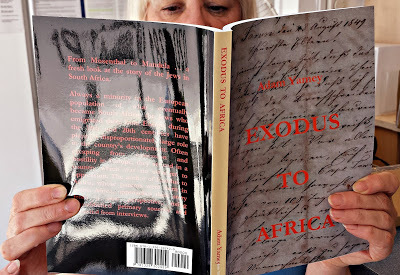
* * * * *

Almost as soon as the British took over the Cape Colony from the Dutch at the beginning of the 19thcentury, practising Jews began arriving there. At first, most of them were occupied in trade although at least one was a medical practitioner. Amongst the earliest traders were well-known names such as Bergtheil, Norden, Solomon, Thalwitzer, and the Mosenthals. The latter were responsible for opening up the interior of the Cape to trade, as well as bringing out more Jewish men from Germany (mainly) to work in their network of trading stores.
Until the discovery of first diamonds and then gold in what is now South Africa, most Jews leaving Europe tended to head westwards to the USA. After the valuable products started being unearthed, the number of Jews heading towards South Africa rose sharply. Both the increasing prosperity of the 4 constituent territories (that were to unify in 1910 to become South Africa) and also the pogroms in Tsarist Russia led to Eastern European Jews, especially from Lithuania and its neighbours, flowing into the country in ever increasing numbers.
Despite the Jewish people always being a small proportion of the European population of South Africa, they ‘punched above their weight’ – they made a disproportionately large contribution to its development, economically, politically, and in many other ways. This has been described masterfully and in great detail in “The Jews of South Africa” edited by Saron & Hotz, which was published in the 1950s.
My book “Exodus to Africa” approaches the story of Jewish migration from Europe to South Africa from a different angle. I have used the stories of some members of my large South African family to exemplify and illustrate a range of aspects of this movement of Jews out of the lands where they were subject to oppression to a place where they were largely respected and allowed to lead their lives without undue hindrance. My story begins with the earliest member of my family to arrive in the Cape (in 1849), the German Heinrich Bergmann, and it ends with the last person to arrive from Europe, Hendrik Jami. He arrived in the Cape in 1949, having travelled from Lithuania via Shanghai.
“Exodus to Africa” - a study of mass movement of an oppressed people - describes why Jewish people left Europe; how they got to South Africa; what they and their descendants did there; and how some of them influenced the history of the country. My stories include those who witnessed, or were in some way directly involved in: the Cape Convict Crisis of 1849; the Anglo-Boer War; the Union of South Africa; railway building in the Eastern Cape; diamond ‘mining’ in South West Africa; Jewish Territorial Organization; the Grey Shirts; building ‘locations’; fighting in both World Wars; municipal government; and opposing apartheid. My book adds a personal flavour to spice the general history. The examples chosen from my family all illustrate general points relevant to the history of the Jews in South Africa. My story might well be subtitled ‘From Mosenthal to Mandela’

The book is available in paperback ( from www.lulu.com) and also in the Amazon Kindle format.
PAPERBACK: click HERE
KINDLE: click HERE
Published on July 03, 2015 16:37
June 28, 2015
GENESIS OF EXODUS
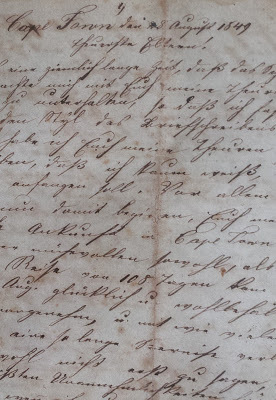
My latest book contains tales of Jewish people who migrated to South Africa, and what they did there once they had arrived.
Now, I want to share with you something of the excitement of how I discovered them.
I will do that by illustrating how I ‘unearthed’ the story of Henry Bergmann, the first of my family to set foot on African soil.
My first forays into family history began in the mid-1990s when I chanced upon a website dedicated to Jewish genealogy: www.Jewisghgen.org (‘Jewishgen, for short). It contained a section where, after becoming a member of Jewishgen, one could register family surnames alongside the towns or villages associated with them. I entered the only combinations that I knew about at the time: ‘Bloch’ of ‘Barkly East’ (in South Africa) and ‘Yamey’ of ‘Plunge’ (in Lithuania), and expected little would happen. However, I was wrong. Two days later, I received an email from Mark in Canada. He was, he informed me, a descendant of the Bloch family in Barkly East. I checked this was correct with my aunt Manon, who knew his branch of the, my, Bloch family. Mark sent me what he knew of the Bloch family tree.
When I told my uncle Felix about this family tree, he rummaged around and presented me with something that he said I might find interesting. How right he was. It was an enormous family tree of the Seligmann family from Ichenhausen in Bavaria. Very detailed in parts, it also contained some gaps where the compiler, Reinhold Seligmann, lacked information. I set about updating the tree using the Internet including web-based Jewish genealogical discussion ‘boards’. Gradually, I filled in most of the gaps. Whilst I was doing so my wife told me that although the updating was worthy in itself it was really rather dull. She suggested that it would be more interesting to try to find out something about the lives of the people who appeared on the family trees that I was gradually accumulating. I agreed with her. Here is how I researched one of these people, the first of my family to set foot on the soil of southern Africa, Heinrich (later ‘Henry’) Bergmann (1830-1866).
The Seligmann family tree, which my uncle Felix Bloch gave to me, was a brilliant starting point for my investigations into the history of my mother’s side of the family. It shows the descendants of Jakob Seligmann (1779-1843) his wife Gitl (né Bergmann: 1780-1862) of Ichenhausen in Bavaria. They had five children of which one was a son. My mother was descended from the son, Isak Rafael, and also from one of his sisters, Peppi (born ‘Rebekka’). Only one daughter, Minette, failed to marry or produce any offspring. The four children who married managed to give their parents many grandchildren, thirty nine of which survived infancy. Fifteen of these derived from Isak Rafael (1813-1870) and his amazingly fertile wife Hale (‘Helene’) Springer (1819-1896) from Bamberg. She was sometimes pregnant more than once within a single year. She had eighteen children, three of who were very short-lived. The Seligmann family grew rapidly. Most of Jakob and Gitl’s grandchildren produced several children each.
A substantial number of the people who appeared in the Seligmann family tree, which Reinhold Seligmann began compiling in the 1930s, show up in internet searches because they have done something that has made their names worthy of being recorded in the domain of public knowledge. I will first concentrate on the name ‘Rosenfels’ because my communication with of a member of this family, Marion, resulted in shedding a lot of light onto an aspect of the early history of Jewish migration to what is now ‘South Africa’.
The Seligmann family tree shows that Jakob and Gitl’s daughter Klara (1807-1872) married Lazarus Bergmann (1800-1888), who was born in Dittenheim which is close to the Bavarian city of Erlangen. Klara’s eldest son was Heinrich (later known as ‘Henry’ Bergmann). He had a brother Ludwig and three sisters. One of the sisters, Regine, married Sigmund Rosenfels, and they produced a number of children including Max Rosenfels (1862-1944), who died in Southern Rhodesia (now ‘Zimbabwe’). Max, who had been living in Rouxville in the Orange Free State, took his family by ox wagon to Salisbury (now ‘Harare’) in 1894, where he worked for the Scot Thomas Meikle (1862-1939) whose firm Meikle Brothers still serves the citizens of Zimbabwe.
While I was searching the internet for ‘Rosenfels’, I chanced upon an entry posted by Marion Rosenfels in Zimbabwe. It was something to do with a school reunion that she was helping to organize a few years ago. I sent a message to her email address, wondering whether she had any connection with ‘my’ Rosenfels family. She told me that she was married to a Rosenfels to whom I am related, and also supplied me with much interesting information about the family including the fact that her husband has a cousin in New Zealand, who was working at that time in New Zealand’s Foreign Service. His name, she informed me, is John. She was unable to give me any contact address for him. Undaunted by this, I sent an email to the New Zealand Foreign Ministry.
Some weeks later, John sent me an email. Along with his friendly message, he attached a series of emails that had been sent between various departments in the Foreign Ministry. It was clear from the content of these messages that the personnel responsible for security were not sure whether to treat my unsolicited email as the work of a crank or as something that John ought to see. Fortunately, he received it! Making contact with John had several unexpected and enjoyable consequences.
John’s father Robert, who left Augsburg in Germany in the late 1930s, sought shelter from the Nazis in New Zealand, where he anglicised his surname. He was a descendant of Klara and Lazarus Bergmann’s daughter Fanny (c. 1840-1913) who married Nathan Gerstle of Augsburg. Incidentally, John kindly updated his branch of the Seligmann family tree, and sent the information to me. He also informed me that he and his wife were about to pay a visit to London, and that he was keen to meet me.
John wrote that he and his wife would be staying with his sister-in-law in London, where she was a senior diplomatic official in New Zealand House. He told me that she and her husband lived near to us. I wrote back, asking him where exactly they lived. Serendipitously, it turned out that she lived in our street at the time, and that he would be staying a minute’s walk from our place. When we met for the first time, John handed me a spiral-ring bound note book. It contained over one hundred pages in handwritten German. He said that I could borrow it and photocopy its contents, which I did.
The book which he entrusted to me - an almost total stranger - contained his father’s notes on the history of the Bergmann family. My German is not great, but that did not deter me from attempting to decipher Robert Lerchenthal’s handwriting. Soon I will relate what I found most interesting in this personal history of the Bergmann family, but first I want to provide some background to my discoveries.
The Seligmann family tree that my uncle Felix gave me was a copy of another copy that my uncle Sven had made from the original tree. About twenty or more years before I became interested in my family history, Sven and his wife met Fea, who was then living in Camberley. Fea, who was born a Seligmann, was a daughter of Reinhold, who drew the family tree of the Seligmanns. She allowed Sven to run her copy of the huge tree through a special copier designed to reproduce architectural plans.
I became very keen to get in touch with Fea. The address that the my uncle Sven had for her was long out of date. So, I posted enquiries about her on genealogical websites, and also asked my friends Nick and Alice, who live in Tel Aviv, whether they could find out about her or her relatives (I knew their names from the family tree and that some of them might be in Israel). My friends managed to discover the whereabouts of the widow of Fea’s late cousin who had been a chemistry professor in Israel. At about the same time, I received an email from Yoni in Israel, who is Fea’s nephew. He wrote to me and also to Fea, and thus we were able to get in contact.
Fea and I got on very well. She was delighted to have met yet another member of her enormous extended family. I visited to her flat in Richmond. She revealed to me that amongst of her many projects, one was to catalogue and describe the numerous photographs and records of the Seligmann family that her father had gathered over the years. Her father Reinhold (1892-1968) had been born in South Africa in a tiny town called Barkly East. His father Sigmund Seligmann (1856-1939), who was born in Ichenhausen, went to South Africa where eventually he set up the equivalent of a department store in Barkly East.
The material that I received from Fea and John in conjunction with other documentation enabled me to make major discoveries about Henry (Heinrich) Bergmann. One of the many hundreds of ‘entries’ on Reinhold Seligmann’s family tree, which caught my eye and aroused my curiosity, was that for ‘Heinrich Bergmann’. It contained the information that Heinrich Bergman, son of Klara (né Seligmann) and her husband Lazarus Bergmann: “Gest. Aliwal-North, Süd Afrika. Verheiratet aber kinderlos” That is: ‘He died in Aliwal North, South Africa. Married but childless’.
Aliwal North meant little to me apart from the fact that my mother used to tell me that when she and her siblings went from Barkly East to boarding school in King Williams Town they had to change trains at this tiny place. I wondered what my mother’s great uncle Heinrich was doing there.
I looked for references to Heinrich both in a book about the comprehensive history of the Jews of South Africa written in the 1950s, The Jews In South Africa, by Messrs Saron and Hotz and also in the on-line catalogue of the National archives of South Africa (‘NASA’). Heinrich is mentioned in the book as follows: “…one Bergman, a German Jew, ‘a very great friend of the De Wet family, associated with all their earliest experiences and troubles, and who was eventually buried on their farm in 1865’”. An entry in the NASA collection lists his grave as being one of those in the family cemetery of the De Wet family. My interest in Heinrich began to grow, and was given a boost when I discovered the following passage (translated, in this case, by my cousin John Englander, and shortened in this article) in Robert Lerchenthal’s handwritten history:“The most glittering person - both in the light side and on the shady side, was arguably Uncle Heinrich. … Early on, Heinrich realised the opportunity to emigrate to South Africa. I recall a masterly description of a sailing ship journey, in which he described a mutiny of the sailors, suspenseful as anything written by a novelist”The extract also contained these intriguing words: “… But as he had to pay £5,000, he forged a Bill of Exchange in the hope that he would have enough money by its due-date. As this was not the case, he shot himself dead. My grandmother Fanny Gerstle often spoke of him with love and admiration. She related that all of his friends were horror-stricken by his suicide, as they would have lent him the money with gladness.”
This extract fascinated me. The first paragraph of the excerpt reproduced above contains much that I have found to be true. One evening when Fea was visiting our flat for dinner, I showed her that passage from Robert’s handwritten history. She read it without making any remarks. Some weeks later when we met again, she presented me with a huge folder containing nine or ten large high quality coloured photocopies. These turned out to be copies of the pages of the letter mentioned above. This was the letter written by Heinrich Bergmann in 1849, about which Robert had written that it was: “… a masterly description of a sailing ship journey, in which he described a mutiny of the sailors...” It contained a lot more, but I will return to that when I have introduced you to another of my many cousins, the late John E. who helped me make sense of the letter.
One of Klari Bergmann’s sisters was my direct ancestor Rebecka Seligmann (1810-1893). She married Heinrich Wimpfheimer (1813-1876), and both were born in Ichenhausen. The curious sounding (to English ears) name ‘Wimpfheimer’ both amused and fascinated me. I knew nothing about this ‘root’ of the family. It did not take me long to discover that there was a well-documented Wimpfheimer family from Ittlingen, and that ‘our’ Wimpfheimer family from Ichenhausen had no known connection with it. By contacting various descendants that were mentioned on Reinhold Seligmann’s family tree, I began to piece together clues about ‘our’ Wimpfheimers. Some important clues were embedded in Here am I, the entertainingly written autobiography of yet another cousin, a portrait artist who had the unlikely name of Samuel Johnson Woolf (1880-1948). Eventually, I was able to piece together a family tree of, and much information about, the Wimpfheimers of Ichenhausen. I published my investigative endeavours and results in Stammbaum, a journal about German Jewish genealogy that used to be published by the Leo Baeck Institute (‘LBI’) in New York City.
After my article was published, I received an email from John E. Retired and living in the New York Borough of Queens, he worked as a volunteer at LBI several days a week. One morning, he picked up the latest issue of Stammbaum and spotted my article. He became very interested when he realised that it was about the very same Wimpfheimer family that his ancestors had belonged to. This prompted him to write to me, and thus began a wonderful correspondence between us. I managed to meet him and his lovely wife in New York a year before he died.
As I transcribed successive portions of Heinrich Bergmann’s long letter of 1849 from cursive Gothic script into German (in modern Latin script), I sent them to John, who was born in Germany before WW2 and a fluent German speaker. He made sense of the errors that I made in the transcription and gradually we translated almost the entire letter apart from a few sentences on the last page, which were illegible.
Material contained in Heinrich’s letter contained clues as to what he did in South Africa, and what brought the earliest Jewish settlers to the country long before the discovery of diamonds and then gold. My researches continued when we visited South Africa in 2003. A visit to the small museum in Aliwal North, and to descendants of Heinrich’s friends the De Wet family produced resulted in me obtaining even more information about Heinrich. All of this, combined with some library research including obtaining copies of documents from The South African National Archives, helped bring a long forgotten name on a family tree ‘back to life’.
The genesis of the stories in my book, Exodus to Africa , derives from research such as described above as well as on what I have learnt by talking to a number of my relatives who remember much more than they believed when I first approached them.
"EXODUS TO AFRICA"
by Adam Yamey
is available in
Paperback (click: HERE )
& on Kindle (Click: HERE)
Published on June 28, 2015 01:29
June 23, 2015
Most children don't ask ...

In general, children look forwards, not backwards: to the future, not the past.
This is a good thing generally speaking. An exception to this is based on the fact that one’s parents and other elders in the family are younger when you are younger. Often their memories are better when they are in their prime than when they have aged.
At a school reunion, the current headmaster at my old school, Highgate in North London, once addressed a group of us ‘old boys, who were in our 50s. One of the things he said, and it is the only one that I remember, was that we who were assembled to listen to him had reached the age when the ‘nostalgia gene’ kicks in.
Some of us who have reached the age where this gene begins to express itself have already lost older close family members, or those who remain, are beginning to lose their memories. My mother died over 30 years ago, but fortunately for me a number of my uncles and aunts, as well as my father, have thrived without loss of memory. So, when my ‘nostalgia gene’ kicked in, in my 50s, and I became interested in knowing more about the past of my family, they were able to help me gather information. This allowed me to realise in which directions to further direct my researches.
If only I could turn back the clock and speak to my mother or my grandmother or my father’s step-father, whom I knew until I was in my teens, how much more I would have learnt. But, being young, I was looking forwards rather than backwards. And, several unrepeatable opportunities were lost.My advice to anyone, who wants to learn about their family’s past, is to start young. If a relative says something that recalls the past, jot it down – you never know when you will become seriously interested, and will then value what you have noted.
I decided to set down a summary of what I had researched over the years so that if those who follow me ask about my family’s history when I can no longer recall it, it will be set down in writing. I decided that rather than confine myself to my own family’s history, some of which was based on what my elders have told me, I would try to write something that covered this, but with a more general appeal.
The result is my latest book “Exodus To Africa”, which I hope will interest people who like me have a Jewish South African heritage. Naturally, I hope that this book will also appeal to a more general audience.
Click HERE for PAPERBACK
Click HERE for KINDLE
Published on June 23, 2015 00:08
June 13, 2015
THEY WENT TO SOUTH AFRICA
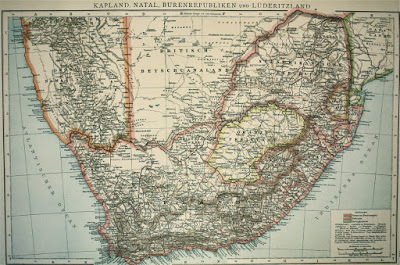
EXODUS TO AFRICA
By Adam Yamey
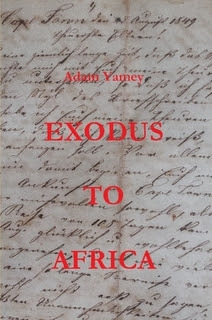
This is to tell potential readers what my latest book Exodus to Africa is all about.
Prior to the British taking over the Cape Peninsula in about 1800, Jews were not permitted to live there by the Dutch East India Company that had been governing the region for several centuries. Some Jews, who converted to Christianity, did set foot in what is now ‘South Africa’, but unconverted Jews did not. The arrival of the first openly practising Jewish settlers followed close on the heels of the commencement of British rule.
At first, there was a small trickle of Jewish settlers, almost all of them from Great Britain and the German states. A few arrived from St Helena. With the arrival of the Mosenthal brothers from Kassel, the flow began to increase. The Mosenthals and their Jewish associates began setting up a chain of trading stores, which effectively began to make the remote interior of the Cape Colony begin to prosper. All of this activity began before diamonds (in about 1868) and gold (in about 1880) put South Africa (i.e. the territories that united after 1910) amongst the economically significant countries in the world. Before the discovery of these precious commodities and the opening of the Suez Canal, The Cape was little more than a place, like the tiny island of St Helena, where ships stopped to pick up water and supplies whilst they travelled between Europe and Asia. It was not a place that attracted many immigrants, Jewish or otherwise, from Europe. The USA was the most favoured destination for those seeking a better life. The diamond and gold ‘industries’ that began in the latter half of the 19th century changed this. South Africa became attractive to immigrants including the Jews. The trickle of Jews from Europe to South Africa began to become an exodus (especially from Tsarist Lithuania). At the beginning of the 19th century, there were a handful of Jews in southern Africa. By the 1930s, as many as one in twenty ‘white’ people was Jewish.
My book, Exodus to Africa, takes a fresh look at the reasons Jews chose to travel to South Africa; how they got there; what they did when they arrived; what they and their descendants did to affect the history of the country; how they helped to oppose racial inequality (apartheid and its antecedents).
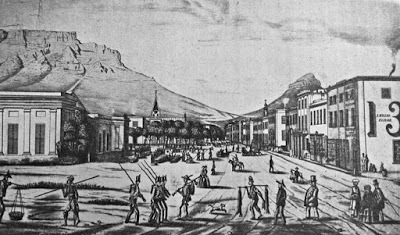
The first of my relatives to arrive in South Africa was Heinrich Bergmann from Bavaria. He disembarked at Cape Town in 1849. The last of them, my father’s cousin Hendrik Jami, who arrived 100 years later. Between these two dates, many members of both of my parents’ families migrated from Europe to South Africa. Their diverse experiences cover many aspects of Jewish life in the country. Using many of their stories to illustrate these, I have attempted to produce a history of the Jews in the south of Africa. The stories are told against the ever changing historical background of the troubled country where they chose to settle. My book is based on a multitude of sources, both previously unpublished primary material (documentary and from interviews) and also published secondary documentation.

Here are a few of the ‘protagonists’, whose tales are unfolded in my book:Heinrich Bergmann (1830-1866), an early settler typical of the Jewish man who joined the Mosenthal Brothers. His life took a surprising turn.
Jakob Seligmann (1846-1906), from Bavaria, was a ‘founding father’ of a small town in the Orange Free State. He fell afoul of the law and fled from Africa.
Sigmund Seligmann (1856-1939), also from Bavaria, started as an employee in the Cape Colony, and then began his own successful trading business before retiring to Germany in the late 1890s.
Franz Joseph Ginsberg (1862-1936), from a part of Prussia that is now Poland, began life in South Africa as a photographer. Soon, he became an industrialist, and then first an influential local politician, and later a national one. In 1927, he was elected a Senator in the Parliament of united South Africa.
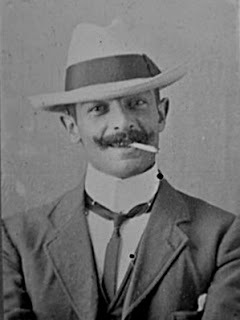
Gustav Ginsberg (1872-1922), Franz’s brother, a dentist, who suffered from the effects of the vagaries of first the 2nd Boer War and then later the First World War. His sons became well-known in the arts, both in South Africa and the USA.
Iwan Bloch (1886-1931), from Baden-Württemberg, who began working as a shop assistant in Zurich, and ended up the Mayor of a town in South Africa.
Joseph Halperin (1870- c. 1949) sailed to South Africa with his wife and three children. Ran a bakery and then a dairy in Cape Town before retiring to enjoy the successes of his children who had advanced up the ‘social ladder’.
Solomon Yamey (1883-1931) left his shtetl in Tsarist Lithuania and became a wandering pedlar (‘smous’) in the Cape before owning his own successful store in an Afrikaans speaking town near Cape Town.
By the time that John Katzin (1866-1931), who was born in Tsarist Lithuania, arrived in South Africa he had already lived in Amsterdam and London. In South Africa, he made a fortune in the laundry business. Some of his children became noted in wider world of public work and literature.
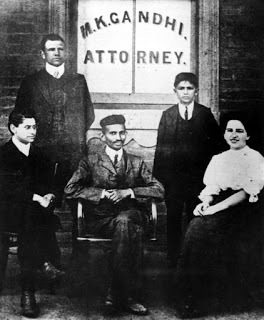
Henry Polak (1882-1959), [seated left in the picture above] a lawyer with London, became one of MK (later the ‘Mahatma’) Gandhi’s close associates in South Africa.
David Kitson (1919-2010) was one of the brave people with Jewish roots who actively supported the struggle against apartheid. His cousins the Budlenders, of Lithuanian and Polish Jewish extraction, risked arrest and worse because of their brave stand against the iniquities of racial oppression in South Africa.
There is no doubt that though a small proportion of the European population of South Africa, the
Jewish people played a disproportionately large role in the development and history of its country
from 1800 onwards. Freed from the repression and hostility that they faced in the countries where
they were born, they flourished in a country that was no stranger to oppression. Exodus to Africa explores all of this and much more.
Exodus to Africa is NOW available on KINDLE:
CLICK HERE to buy A COPY
PS: you don't need to own a Kindle reader; you can downloaed a free reader for your PC, laptop, tablet, or 'phone from www.amazon.com (Click HERE)
By the 27th JUNE 2015, you will be able to buy a
PAPERBACK edition by clicking HERE
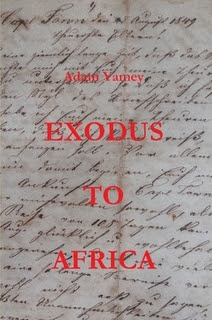
Published on June 13, 2015 05:02



